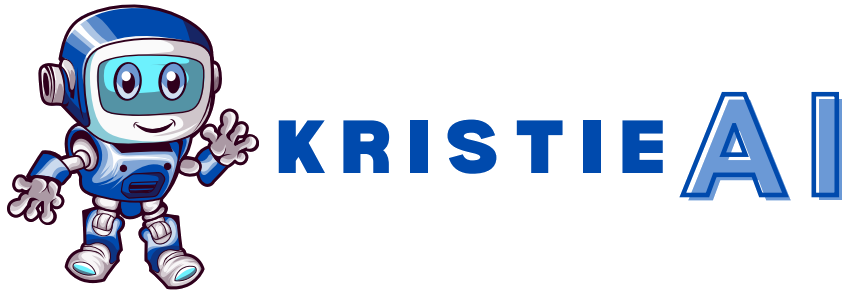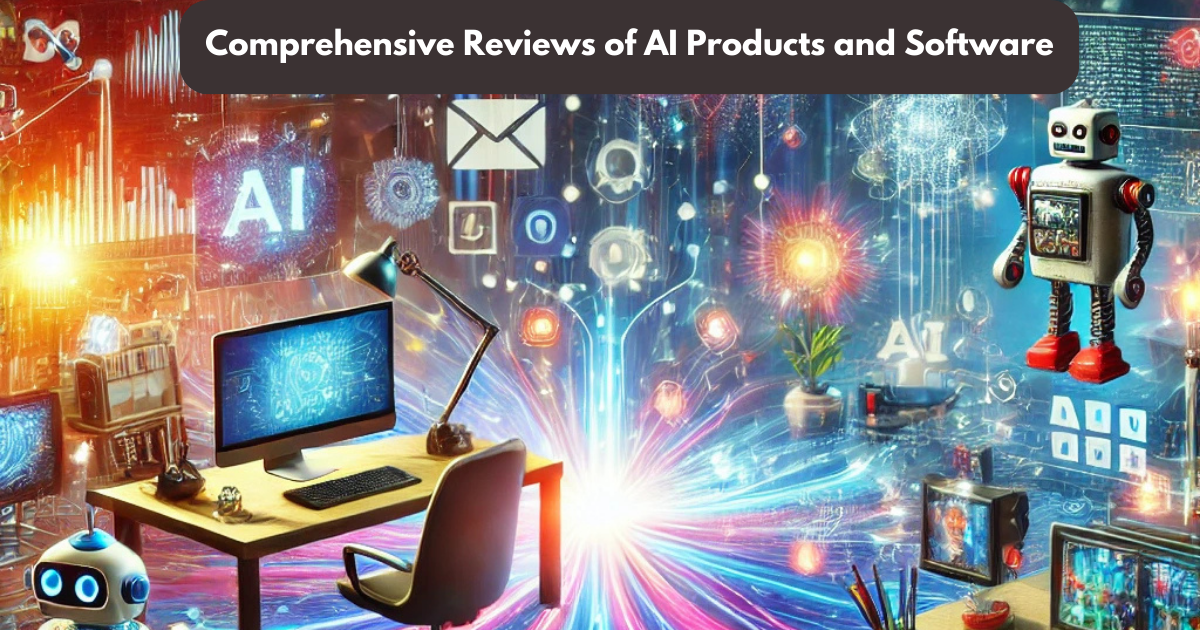Artificial Intelligence (AI) is changing the world around us in amazing ways. It is helping businesses, schools, and even hospitals work faster and smarter. From clever chatbots that answer questions to smart tools that make art, AI is everywhere. It’s like having a super assistant that never gets tired!
This article will guide you through the exciting world of AI products and software. You will learn about the best tools, what they can do, and how they can help. Choosing the right AI tool can feel tricky, but don’t worry! We’ll show you how to pick the perfect one that suits your needs.
By the end, you’ll know how to spot top-notch AI tools and make wise decisions. Ready to dive into this fascinating journey? Let’s explore the incredible power of AI together!
AI Product Reviews
What Are AI Products?
AI products are tools or gadgets that use artificial intelligence to solve problems or make tasks easier. They can think, learn, and improve over time, just like how people do. These products are used in many areas like schools, homes, hospitals, and businesses. They help save time, make work simpler, and sometimes even add a little fun to life.
Types of AI Products
AI-Powered Devices
AI-powered devices are tools that use smart technology to work better. For example:
- Smart Home Gadgets: Devices like smart speakers or lights that you can control with your voice. Imagine saying, “Turn off the lights,” and it just happens!
- Robots: Some robots can clean floors, mow lawns, or even help in factories. They make hard tasks easy and save a lot of time.
AI-Enhanced Services
These services use AI to help people in their daily lives. For example:
- Virtual Assistants: Tools like Siri or Alexa can answer questions, play music, or remind you of important things.
- Chatbots: They are online helpers that can chat with you, solve problems, or give information anytime, without needing a human.
How to Judge an AI Product
Not all AI products are equally good. It’s important to know what to look for when choosing one:
- Performance and Features: Does it do its job well? Are its features useful and modern?
- Usability and User Experience: Is it easy to use? Can kids and adults understand how it works?
- Pricing and Value for Money: Is the price fair for what it offers? Does it feel worth buying?
- Real-World Applications: Can it solve real problems or make everyday life easier?
Top AI Products in 2024
Here are some popular AI products making waves this year:
Amazon Echo (Smart Speaker)
Amazon Echo is a voice-activated smart speaker powered by Alexa, designed to make life easier by controlling smart home devices, answering questions, and more.
Features of Amazon Echo
- Voice-controlled smart assistant.
- Integrates with smart home devices (lights, thermostats, etc.).
- Offers hands-free calling and messaging.
- Provides daily updates like news, weather, and calendar reminders.
- Customizable skills for tasks like ordering food or playing music.
Pro’s & Con’s
- Pros: Easy to use, connects to many smart devices, fun voice features.
- Cons: Needs Wi-Fi to work, limited in some languages.
Roomba Robot Vacuum
The Roomba is a robotic vacuum cleaner designed to automate floor cleaning. It can be scheduled to clean independently, saving users time and effort.
Features of Roomba Robot Vacuum
- Automated vacuuming with customizable schedules.
- Smart navigation technology for efficient cleaning.
- Compatible with mobile apps for remote control.
- Detects dirtier areas and focuses cleaning efforts there.
- Works on various surfaces, including carpets and hardwood floors.
Pro’s & Con’s
- Pros: Cleans floors without help, works on a schedule, saves time.
- Cons: Expensive, can struggle with corners.
ChatGPT (AI Chat Tool)
ChatGPT is an advanced AI-powered chatbot that assists with tasks like answering questions, generating content, and providing learning support.
Features of ChatGPT (AI Chat Tool)
- Advanced natural language understanding for realistic conversations.
- Supports content creation like writing articles, essays, and emails.
- Provides instant answers to a wide range of questions.
- Adapts to user queries for personalized responses.
- Accessible on various devices via the internet.
Pro’s & Con’s
- Pros: Answers questions, helps with writing, improves learning.
- Cons: Needs internet, may not know very recent events.
Tesla Autopilot (Car AI System)
Tesla’s Autopilot is an AI-driven car system that assists with driving, improving road safety and convenience through features like lane centering and adaptive cruise control.
Features of Tesla Autopilot
- Adaptive cruise control for maintaining speed and distance.
- Lane centering technology for smoother highway driving.
- Automatic emergency braking and collision avoidance.
- Smart summon feature for parking lot navigation.
- Over-the-air updates to improve functionality and safety.
Pro’s & Con’s
- Pros: Helps with driving, improves road safety, uses advanced technology.
- Cons: Expensive, still needs human attention.
AI Software Reviews: A Comprehensive Guide
What is AI Software?
AI software is a program designed to make computers act smart, almost like humans. It allows machines to think, learn, and make decisions on their own. This kind of software is used to solve problems, predict outcomes, and even create new things like art, essays, or computer codes.
AI software is used in many areas to make work easier and faster:
- Schools: Helping students learn or assisting teachers with grading.
- Hospitals: Finding health problems early or suggesting treatments.
- Businesses: Analyzing data to plan better and make more money.
For example, an AI tool like Grammarly can check writing mistakes, while ChatGPT can help you with ideas or write full stories. These programs make daily tasks easier for people across the world.
Types of AI Software
Machine Learning Platforms
- These platforms are like teachers for computers. They help machines learn from past data to make better decisions.
- Example: A business uses a machine learning tool to predict what items customers might buy during the holiday season.
- How They Help: Companies use machine learning to spot trends, reduce costs, and improve services.
Natural Language Processing (NLP) Tools
- These tools allow computers to understand and speak human languages.
- Example: Chatbots on websites that answer questions or apps like Google Translate that convert one language to another.
- How They Help: They improve communication, whether it’s customer service, writing emails, or even learning a new language.
Predictive Analytics Software
- This software uses data to guess what might happen in the future.
- Example: Doctors use it to find if a patient might get sick, and businesses use it to know what products will be in demand.
- How They Help: By making predictions, they help people prepare better and make smarter decisions.
AI in Design, Coding, and Content Generation
- These tools create things like logos, designs, or even computer programs.
- Example: A tool that can design a website in minutes or write a story based on simple instructions.
- How They Help: They save time and make creative tasks simpler, even for people who are not experts.
How to Review AI Software
When you are picking an AI tool, there are some important things to think about:
Functionality and Ease of Integration:
- Does the software do what it promises?
- Can it work well with the tools you already have? For example, does an AI writing tool work with Microsoft Word?
Reliability and Accuracy
- Does the software give correct and consistent results?
- If it’s a health app, can you trust it to give accurate suggestions?
Pricing Models and Scalability
- Is the cost worth the features?
- Can the tool grow with your needs, like adding more users or features when needed?
User Feedback and Reviews
- What do other people say about it?
- Are there many positive reviews or common complaints about certain features?
Popular AI Software Tools
ChatGPT (NLP Tool)
- Features: Writes essays, answers questions, and helps with brainstorming.
- Use Cases: Perfect for students needing writing help, writers looking for ideas, and small businesses needing quick answers.
- Drawbacks: Needs internet and might not have the latest information.
TensorFlow (Machine Learning Platform)
- Features: Builds smart systems for predicting trends and solving problems.
- Use Cases: Used by tech companies, researchers, and industries handling large amounts of data.
- Drawbacks: Learning how to use it can be hard for beginners.
Grammarly (Content Editing Tool)
- Features: Checks grammar, spelling, and tone in your writing.
- Use Cases: Great for students writing essays, professionals creating reports, or anyone sending emails.
- Drawbacks: The free version has fewer features, and advanced tools are only available in the paid version.
Adobe Sensei (AI in Design)
- Features: Helps create designs, edit images, and automate tasks like resizing photos.
- Use Cases: Perfect for designers who want quick and professional results.
- Drawbacks: Requires a paid subscription and needs a powerful computer to work smoothly.
Tableau (Predictive Analytics Software)
- Features: Turns boring data into beautiful charts and graphs that are easy to understand.
- Use Cases: Helps businesses, researchers, and schools to understand their data and make better decisions.
- Drawbacks: Can be costly, especially for small teams or individuals.
Best AI Tools for Businesses
Why Do Businesses Need AI Tools?
AI tools help businesses in many ways. They save time, reduce mistakes, and make work faster. These tools can also handle tasks that take hours for humans. By using AI, businesses can focus on growing while staying ahead of the competition.
For example:
- Efficiency: AI tools can finish tasks quicker than people.
- Automation: Repeating tasks like answering emails or organizing data can be done automatically.
- Competitive Advantage: AI gives businesses smart insights, helping them make better decisions.
Without AI, businesses can miss chances to grow and succeed.
Top AI Tools by Business Use Case
Customer Service: AI Chatbots
- AI chatbots are like virtual assistants for customers. They answer questions, solve problems, and work 24/7.
Examples
- ChatGPT: Can chat with customers and offer instant answers.
- Zendesk AI: Helps with customer support tickets.
Why They Help: These tools make customers happy by providing quick and accurate help, even late at night.
Marketing: AI Analytics Tools
AI tools for marketing collect data about customers and suggest ways to improve campaigns.
Examples
- HubSpot AI: Tracks customer behavior and suggests marketing ideas.
- Hootsuite Insights: Analyzes social media trends.
Why They Help: Businesses can know what their customers like, making ads and posts more effective.
Operations: AI Task Management Platforms
These tools help businesses organize their daily work. They assign tasks, set deadlines, and track progress.
Examples:
- Trello AI: Organizes tasks visually for teams.
- Monday AI: Suggests ways to improve workflows.
Why They Help: These tools reduce confusion and make teamwork smoother.
Industry-Specific Tools
AI tools are created for specific industries to solve their unique challenges.
Examples
- Healthcare: IBM Watson Health finds patterns in medical data to suggest treatments.
- Real Estate: Zillow AI estimates property prices and finds buyer preferences.
Why They Help: These tools give experts the support they need, making their work more accurate and efficient.
How to Choose the Right AI Tool for Your Business
Picking the right AI tool is important. Not all tools will fit every business. Here’s how to make a smart choice:
Align with Business Goals
- Think about your needs. Do you need faster customer service? Better marketing? Or smoother operations?
- Choose a tool that solves your specific problems.
Cost-Effectiveness and ROI (Return on Investment)
- AI tools should save money in the long run. Check if the price matches the benefits you’ll get.
- Tools like AI chatbots can reduce costs by replacing repetitive tasks done by people.
Case Studies and Success Stories
- Check reviews or stories from other businesses.
- For example, a company may share how an AI marketing tool boosted their sales by 30%.
- Success stories can help you trust a tool and understand how it works in real life.
Comprehensive AI Software Comparisons
Why Compare AI Software?
AI software can make life easier, but not all tools are the same. Picking the wrong one can waste time and money. That’s why it’s important to compare before you choose. The best tool will match your needs and make your work smoother. With the right fit, businesses can save time, cut costs, and grow faster.
Comparison Framework
When comparing AI software, here are key factors to keep in mind:
Features and Customization
- Does the software have the tools you need?
- Can it be customized to fit your tasks? For example, a writing tool should let you adjust tone and style.
Pricing Tiers
- Check if it fits your budget.
- Some tools have free versions with limited features, while others require a subscription.
Ease of Deployment
- Is it simple to set up and start using?
- Will it work well with the tools you already have, like Google Workspace or Microsoft Office?
Support and Community
- Does the company offer good customer support?
- A helpful user community can provide tips and solve problems quickly.
Head-to-Head Comparisons of Leading AI Software
Here’s a look at some popular tools compared side by side:
AI Writing Tools: ChatGPT vs Jasper
| FEATURE | CHATGPT | JASPER |
| Ease of Use | Very simple, perfect for beginners. | Simple but needs some training. |
| Customization | Limited tone options. | Offers templates for specific tasks. |
| Pricing | Free version available. | Paid plans only. |
| Best For | Students, casual writers, small tasks. | Businesses, professional writers. |
| Drawback | May not include latest data. | More expensive than alternatives. |
AI Project Management Tools: Monday AI vs Trello AI
| FEATURE | MONDAY AI | TRELLO AI |
|---|---|---|
| Ease of Use | User-friendly but detailed setup. | Simple drag-and-drop interface. |
| Customization | Highly customizable for tasks. | Limited customization options. |
| Pricing | Free trial; paid plans affordable. | Free basic version; advanced features cost extra. |
| Best For | Teams with complex projects. | Small teams or personal use. |
| Drawback | Takes time to learn advanced tools. | Fewer features for large teams. |
AI Image Generation Tools: Mid Journey vs DALL·E
| FEATURE | MIDJOURNEY | DALL.E |
|---|---|---|
| Ease of Use | Requires Discord to access. | Simple web-based tool. |
| Image Quality | High-quality, artistic designs. | Realistic and versatile images. |
| Pricing | Paid plans only. | Free credits; paid plans for extra use. |
| Best For | Artists, designers. | Businesses, casual users. |
| Drawback | Limited accessibility. | Fewer creative styles than MidJourney. |
FAQs about AI Tools and Software
AI tools are smart programs or devices that use artificial intelligence to solve problems, save time, and automate tasks. They are important because they make life easier by improving efficiency and accuracy in areas like customer service, marketing, and creative work. From chatbots to design tools, AI helps businesses and individuals achieve more with less effort.
To choose the right AI tool, first identify your needs. Do you need help with writing, managing tasks, or analyzing data? Next, consider the tool’s features, cost, and ease of use. Check reviews and see if the tool works well with your current software. It’s also helpful to try free trials to see if the tool fits your workflow.
Popular AI tools for beginners include:
ChatGPT: Great for writing, learning, and brainstorming.
Grammarly: Helps improve writing with grammar and tone suggestions.
Trello AI: Simplifies task management with easy drag-and-drop features.
These tools are user-friendly and have free or affordable plans to get started.
AI tools come in different price ranges, from free versions to premium subscriptions. Many tools, like Grammarly or DALL·E, offer free tiers with basic features. While some advanced tools like MidJourney or Tableau may be costly, they provide significant value by saving time, increasing productivity, and offering unique capabilities. Always weigh the tool’s benefits against its cost to ensure value for money.
AI tools are designed to help, not replace, people. They automate repetitive tasks and provide insights, allowing humans to focus on more creative or complex work. For example, an AI chatbot can handle basic customer queries, but humans are still needed for deeper problem-solving. AI works best as a partner to enhance human skills, not as a replacement.
Conclusion
AI tools and software are transforming the way we work, learn, and create, offering solutions that save time, improve accuracy, and unlock new possibilities. From smart chatbots and creative design tools to powerful project managers and predictive analytics, the best tools make tasks simpler and faster.
Choosing the right AI tool means looking at your needs, budget, and long-term goals. Each tool works best in specific situations, so taking time to compare options is important. AI is growing quickly, and staying informed about new trends can keep you ahead. Explore these tools, try what fits your needs, and see how AI can make your work smarter and more exciting!




